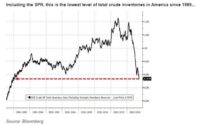What Would Happen if the Fed Caves to 4%-5% Core PCE Inflation, Gives up on 2%, as some Folks are Clamoring For?
The economy would muddle through, but in the markets, all heck would break loose. Here’s why.
By Wolf Richter for WOLF STREET.
The issue is this: Since April 2022, the Fed has hiked its policy interest rates by 450 basis points, but consumer price inflation as measured by the “core” PCE price index – which excludes volatile food and energy products – has been moving up and down in the same high range without much visible improvement.
The core PCE price index, the Fed’s favored inflation index for its 2% inflation target, was at 4.6% in February, according to the latest release, roughly the same as in July 2022. “Core” CPI, which has been running at about 5.5% for months, actually accelerated in March.
So now there are voices – voices with big megaphones – that say that the Fed will and should change its inflation target because this inflation will not go back to 2% without a lot of economic damage, and to get that kind of economic damage, interest rates would have to rise much further, and neither the Fed nor the White House nor Congress is willing to go there.
Americans can live with 4% to 5% core PCE inflation just fine, they say. And once everyone gets used to it, it’ll vanish off the headlines, they say.
And so these voices say through their big megaphones that the Fed will abandon its efforts to push inflation down to 2%, and that it will therefore pivot, and that yields will fall and markets will therefore explode higher or whatever.
Oh really? What does acceptance of 4%-5% inflation mean for yields and asset prices? We probably don’t want to find out.
But let’s play along with it for a moment to see where this will go. Let’s assume that the Fed will actually do this, that it will say, ok, fine with us, we went as far as we’re going to go with interest rates, and 4% to 5% core PCE inflation is acceptable even over the longer term, and we’ll just closely monitor how this develops, etc. etc.
It would completely annihilate the current dream that inflation will revert to 2% by the end of 2023, or at the latest by the end of 2024.
Short-term rates are going to stay high for a long time. At 4% to 5% core PCE inflation, the Fed won’t cut short-term rates by much if at all, even if it accepts this high inflation as the new normal.
Long-term yields will explode. Long-term yields are what really matter for asset prices. They are a bet on long-term inflation. This dream of inflation reverting to 2% in short order is part of what keeps long-term Treasury yields so low. The 10-year Treasury yield is currently at about 3.5%, well below the rate of inflation. Investors buying a 10-year maturity at 3.5% are confidently betting that inflation will revert to 2% shortly.
And if bond markets – including the Treasury market, good grief! – are told by the Fed that core PCE inflation will be 4% to 5% and that core CPI will be at 5% to 6% for years to come, and that everyone will get used to it, and that the Fed will be happy with it, and won’t do anything about it, then the 10-year yield will spike to 6% or 7% to be above this long-tern new normal.
And mortgage rates will blow out. With the 10-year yield spiking to 6% or 7% in response to this much higher than expected inflation, the average 30-year fixed mortgage rate will spike to somewhere between 7% and 9%. And stay there.
Higher yields = lower asset prices.
The whole entire logic for low yields in the markets was based on low inflation rates. Core PCE was below the Fed’s 2% target for most of the 13 years between 2008 and 2021. And when it exceeded the Fed’s target for brief periods, it was only by a hair.
The entire QE philosophy since 2008 was based on low inflation, and on the now crushed theory that QE won’t trigger and fuel inflation.
There was confidence in the markets that inflation would not take off, and if it took off for some silly reason, that if would go back below 2% in short order without the Fed having to do much.
All of that is now out the window. Core PCE has been over the Fed’s inflation target since March 2021, and it has been over double the Fed’s inflation target since October 2021.
Right now, the entire market psychology is based on the hope that inflation will be back at 2% by the end of this year or no later than the end of next year. So if the Fed says, “Forget the 2%, if inflation stays at 4% to 5%, and doesn’t get a whole lot worse, that’s fine with us” – well, that would be a rude awakening for markets betting on 2% inflation.
With long-term bond yields spiking to account for that higher inflation rate, bond prices would fall. Commercial real estate prices would fall further, and by a lot, home prices would spiral down. And stocks would take a big hit.
So is that what these folks with the big megaphones really want when they’re calling for, or expecting, the Fed to abolish its fight with inflation and just accept much higher inflation for much longer?
The economy can muddle through higher inflation and higher long-term interest rates as it has done before, with rising wages to meet at least a big part of those surging prices. But asset prices will not be able to muddle through with these types of long-term interest rates.
So folks that are clamoring for the Fed to just accept 4% to 5% core PCE inflation need to be careful what they wish for.
Enjoy reading WOLF STREET and want to support it? You can donate. I appreciate it immensely. Click on the beer and iced-tea mug to find out how:

Would you like to be notified via email when WOLF STREET publishes a new article? Sign up here.
![]()
[ad_2]
Source link


